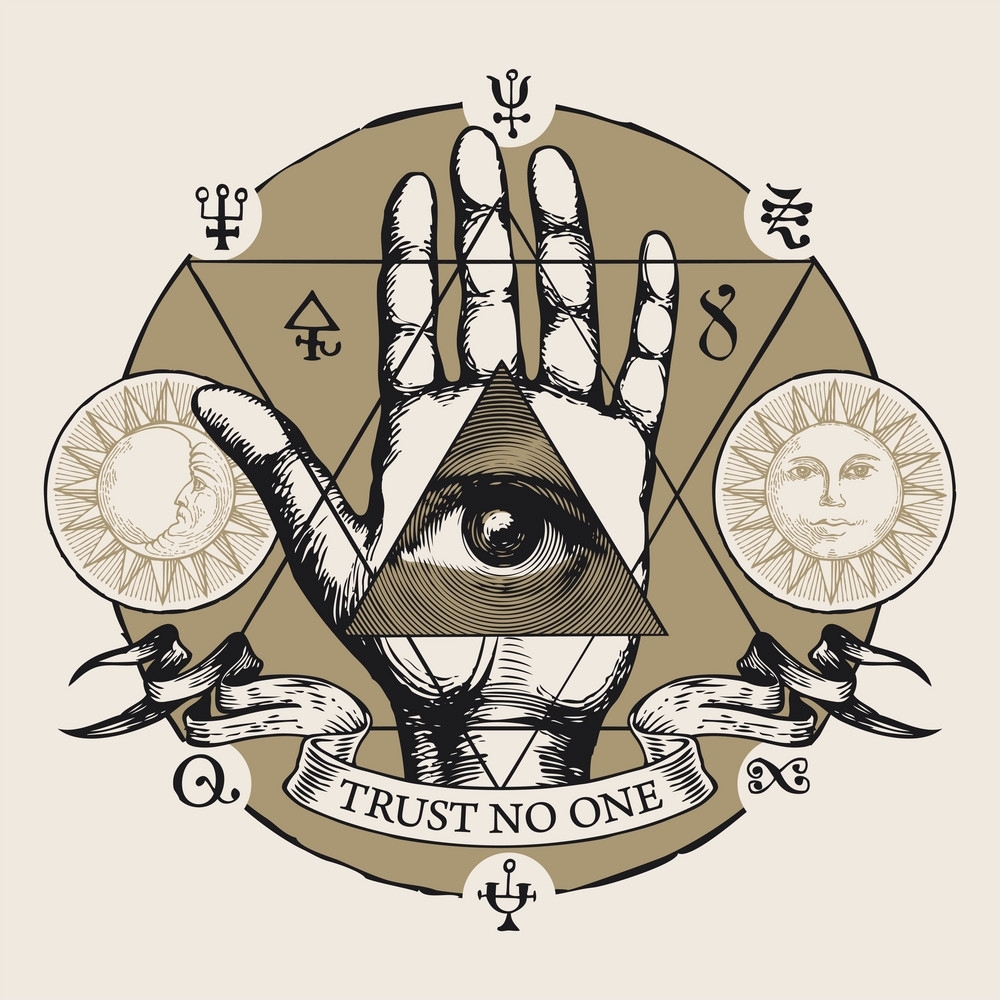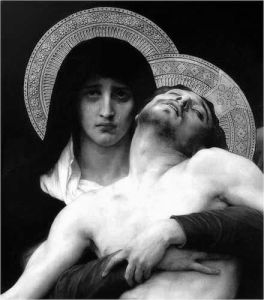The sadomasochistic goddess Dolores, Our Lady of Pain — a twisted complement to the representation of the Blessed Virgin Mary as Our Lady of Sorrows — reigns as a bloodthirsty and licentious embodiment of divine femininity over the narrator in Swinburne’s “Dolores.” Sterile, dominant, and corrupting, Dolores’ sins and joys both number “seventy times seven.” Her paradoxical nature not only stirs passion but also denies its fulfillment — her subjects are consumed by a “desire that outruns the delight.” The inherent juxtaposition and entwinement of sex and death, desire and denial, and pain and pleasure in Dolores’ nature fortify her with a self-feeding power that perpetuates eternally:
We shift and bedeck and bedrape us,
Thou art noble and nude and antique;
Libitina thy mother, Priapus
Thy father, a Tuscan and Greek.
We play with light loves in the portal,
And wince and relent and refrain;
Loves die, and we know thee immortal,
Our Lady of Pain.Fruits fail and love dies and time ranges;
Thou art fed with perpetual breath,
And alive after infinite changes,
And fresh from the kisses of death;
Of languors rekindled and rallied,
Of barren delights and unclean,
Things monstrous and fruitless, a pallid
And poisonous queen.Although the text later suggests that the rise of monotheism may pose some threat to Dolores, as gods fall out of fashion and the Vestal shrines are abandoned, this new God and his holy virgin “shall pass and their places be taken” as Dolores lives on. “Good” cannot possibly stay fashionable for long, and as sin continues to corrupt humanity, Dolores is fed and sustained:
Thy life shall not cease though thou doff it;
Thou shalt live until evil be slain,
And good shall die first, said thy prophet,
Our Lady of Pain.
– from victorianweb.org
Dolores (Notre-Dame des Sept Douleurs) is a poem written in Poems and Ballads in 1866 by Algernon Charles Swineburne. In it, the narrator confronts his twisted version of the divine feminine in Dolores. He laments that worship of her, analogous to the worship of pagan deities of old. In many ways, Swineburne’s sadomasochistic Dolores is reminiscent of Satan, or His feminine aspect Lilith.


